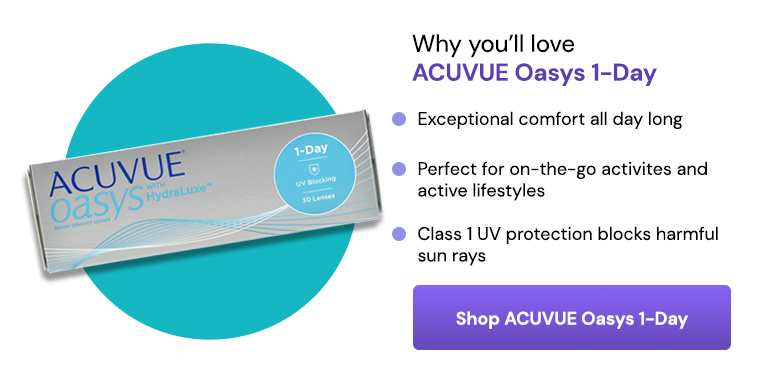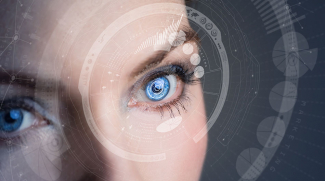A look into the future of lenses
Imagine being able to control your phone, just by blinking. Or having the weather and traffic delivered straight to your eyeball. Sounds a little sci-fi, right?
All this could be possible with high-tech lenses. Taking advantage of new materials and technologies, these lenses go far beyond vision correction, serving as medical devices, health trackers, and even entertainment.
Here’s in-house Optometrist, Roshni, on the latest and greatest high-tech lenses. Get ready to have your socks blown off...
Smart Contact Lenses
What are they?
Silicon Valley start-up, Mojo Vision, is the brain behind the world’s first smart lens, which uses augmented reality to display data and imagery directly in a user’s field of vision.
The ‘Mojo Lens’ provides similar features to a simple smart watch, except it’s operated by eye movements. Though it’s very much still a prototype, some of its capabilities are pretty mind blowing. Weather alerts, traffic information and health stats can be pulled up with eye-tracking controls, and future functionalities include wireless radio, image-recognition and motion sensors. There’s no word on what they’ll cost yet.
What are the benefits?
The ultimate goal of the tech is to deliver useful and timely information without forcing you to look at your phone or lose focus on the world around you. Imagine pulling up your meeting notes in just a blink or tracking your run without a single device.
But the lenses are not just meant to give everyday people superpowers; they’re also to help people with visual impairments, like macular degeneration and glaucoma. The lenses will have the ability to magnify text, highlight edges of objects and adjust lighting, offering those with limited sight a better view of the world around them.
Drug-releasing lenses
What are they?
Drug-releasing contact lenses are designed to gradually administer drugs into the eye, offering a smart alternative to daily eye drops, which can be unpleasant and tricky to apply.
One such development that has drawn huge interest is Johnson & Johnson’s antihistamine-releasing lens. As the name suggests, the lens is infused with antihistamine ketotifen and aims to ease the itch associated with allergies.
The lens has recently passed phase three trials, so Johnson & Johnson will continue to develop this entirely new category of contacts.
What are the benefits?
If you’re one of the 18 million people in the UK that suffer from hay fever, you’ll understand the significance of this development.
Currently, antihistamine eye drops are not compatible with contact lenses, so many lens wearers are forced to ditch their contacts during allergy season. This is very limiting for those who rely on their lenses for work, sports, socialising, and everyday life.
Antihistamine-releasing contacts could give lens-wearers back some of that freedom and eliminate the need to switch to glasses.
Drug-eluting contact lenses will also have huge benefits outside of allergies, by giving people more autonomy over their health and reducing strain on hospitals in the long-term. Other developments include treating conditions such as glaucoma, where compliance with administering vital eye drops can be poor and ineffective.

Colour Vision Lenses
What are they?
A new type of contact lens that can correct colour vision deficiencies in people who have difficulty distinguishing between certain shades — usually red and green.
There’s currently no cure for colour deficiencies, but engineers from Tel Aviv University have come up with a way to restore colour in the eye using a light-filtering technology. This ultra-thin device, known as a metasurface, is embedded into a standard contact lens, to provide a safe and convenient way to correct colour.
It’s yet to pass clinical trials, but early tests reported by The Optical Society suggest the lens can restore colour and significantly improve colour distinctions.
What are the benefits?
Though most people adapt to colour vision deficiencies, they can disrupt simple daily tasks, such as reading traffic signals, taking the right medications and even deciding whether a banana is ripe.
The condition can also cause difficulties in learning and limit career choices. For example, certain jobs, such as electricians, pilots, train drivers may require accurate colour recognition.
This new, colour correcting lens could help to reduce those academic and professional challenges, and improve the quality of sports, arts, and the environment overall.
When will these high-tech lenses hit the market?
There’s a lot more research and development needed to make smart contacts safe, comfortable, and consumer-ready, but it’s something to look forward to in the near future.
Drug-releasing and colour vision lenses still need to go through clinical trials, but they’re a little closer to hitting the market. Watch this space!



